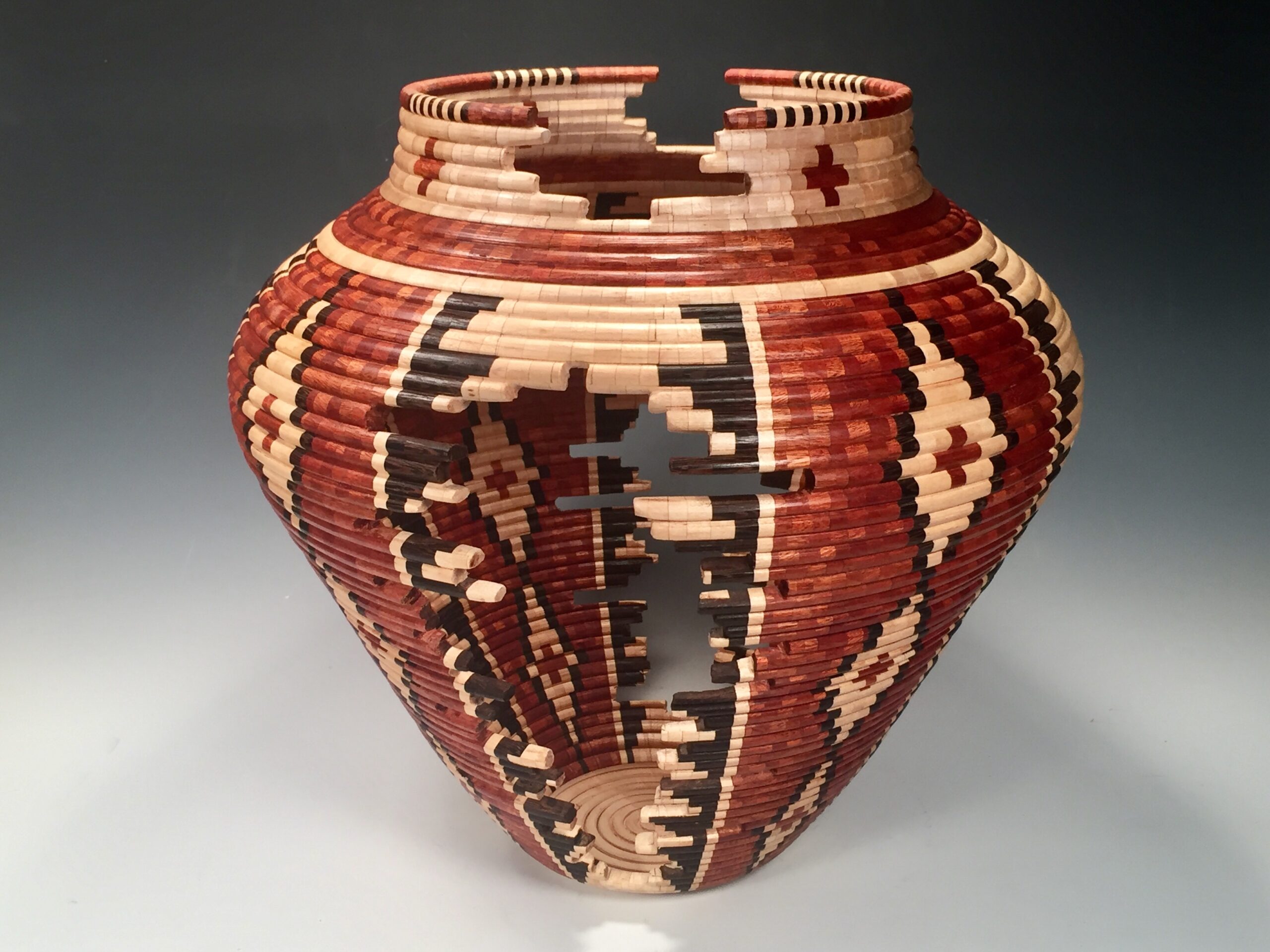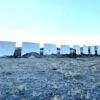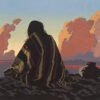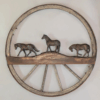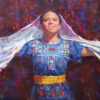Echo Ukrainetz starts each new batik piece with a black and white vintage photo, usually a portrait of a person with an expressive, interesting but not necessarily attractive, face. She sketches the photo, then traces her sketch onto high-grade cotton stretched on a frame and draws in the details of the face.
Then Ukrainetz works, sometimes for more than a month, dying and waxing each section—the shirt, the pants, the boots, then the face, and finally the background—until her stretched cotton is as stiff as a piece of cardboard. She freezes it and breaks specific segments of wax before rubbing more ink on to create a cracked look.
Finally, Ukrainetz heats her iron and prepares to see what her newest batik actually looks like. “It’s so unpredictable,” she says. “When you iron the wax out, it can be a disaster or a happy surprise; either is possible every time.”
Batik is an ancient art form that involves using dyes and waxes on fabrics to create intricate designs, patterns, and works of art. It originated in Indonesia, where the finished products are still worn in traditional ceremonies as well as for casual clothing. For Ukrainetz, it’s a medium to create colorful portraits of Native Americans, cowboys, cowgirls, and others.
Read the full article in the May/June 2023 issue.
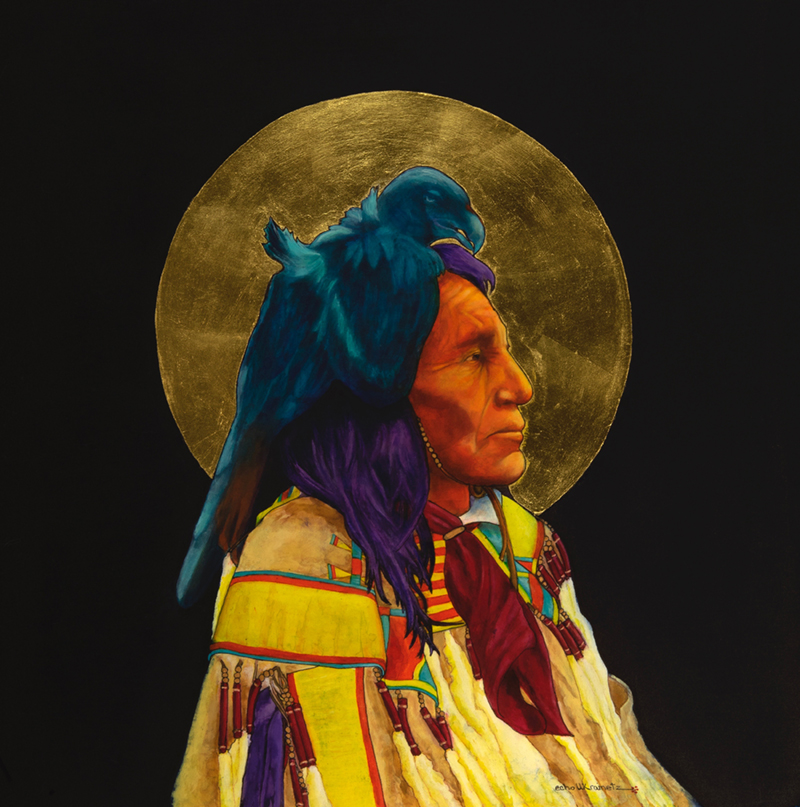
The Raven
Batik and gold leaf
28″ by 28″
“One of Richard Throssel’s most famous portraits is of Chief Long Otter, 1905. His ability to capture the essence of the person or the ceremony was second to none. Long Otter is wearing a raven headdress. The raven is credited for many other gifts and curses to man, but the creation of the stars, moon, rivers, and sun are the most essential and universally believed myths amongst North American Indians. I added the moon in homage of the myth.”

The Future Lies Ahead
Batik
16″ by 24″
1913 Photo of Chief Iron Tail by De Lancey W. Gill; Gertrude Kasebier photograph of Zitkala-Sa
“The narrative of this piece lies in an Native American poem by the same name and that seemed fitting for the combination of the two photos. It ends like this:
‘A long and winding road whose every turning means discovery
Old hopes, new laughter and shared tears.
The adventure has just begun.'”

